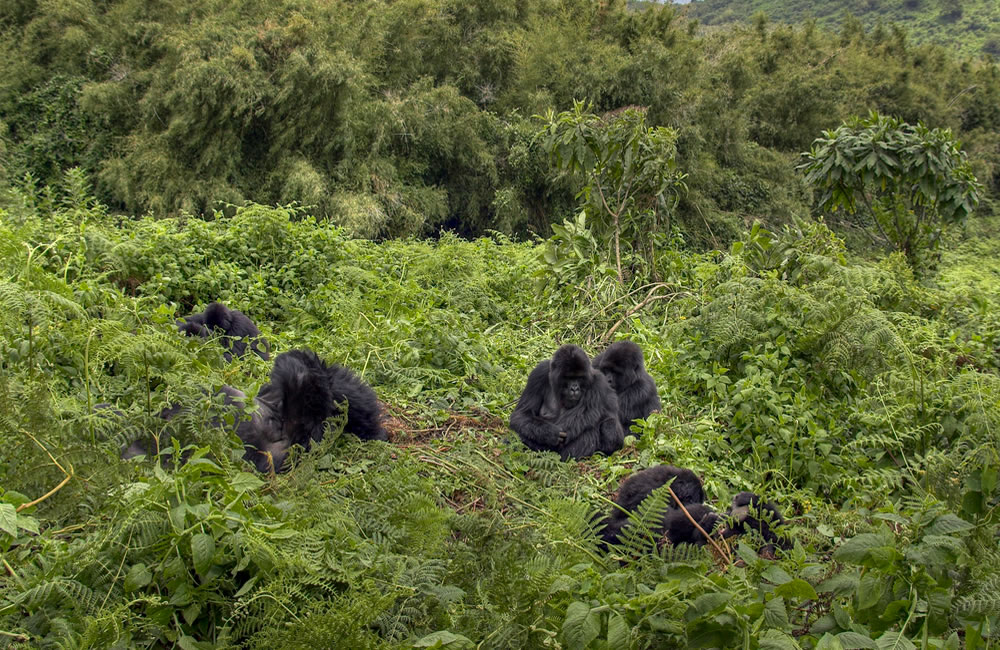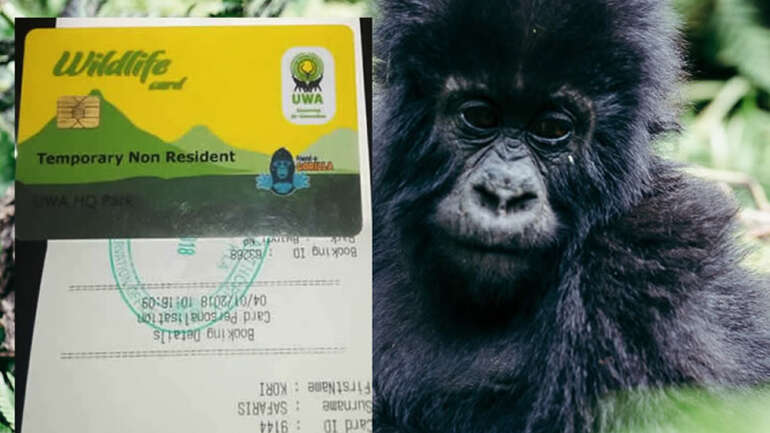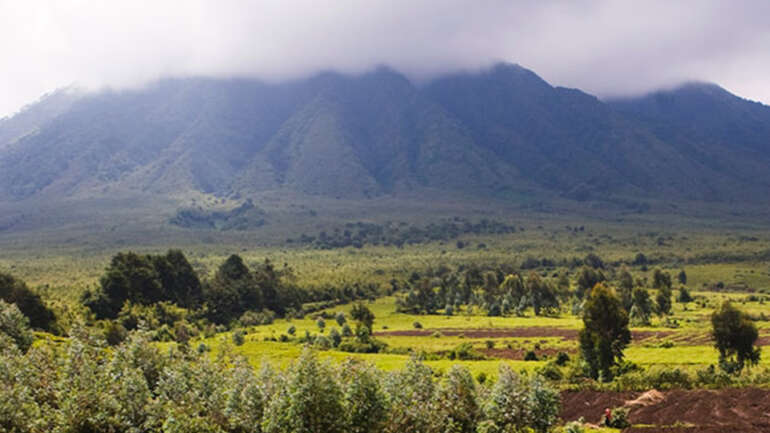Extending for 7800 square kilometers, Virunga National Park in the Eastern Democratic Republic of Congo is one of the excellent safari destinations to trek Mountain gorillas in Africa. Virunga is one of the oldest National Parks on the Continent established in 1925 and when you talk of unforgettable experiences, this Park is unmissable.
Most travelers planning Congo safaris wonder when is the “best time to visit Virunga Gorillas is”. The good news is that Virunga Gorillas can be visited throughout the year but if you must choose, the dry season is perfect for gorilla trekking adventures in this Congo National Park. First, the Eastern side of the Democratic Republic of Congo (where Virunga National Park is found) is mainly characterized by Equatorial forests hence rain downpours are expected at any time of the day hence it shouldn’t be a surprise to experience a rainy day during a traditional dry month.
The dry season in Virunga National Park
The Dry season in Virunga National Park is experienced from late December to February then again from June to September. These months experience little or no rains, drier forest floors as well as hiking trails. Also, the vegetation is slightly scarcer in Virunga National Park during these months and this makes it less challenging to maneuver through the jungles to search for the Virunga Gorillas.
However, trekking Virunga Gorillas in the dry season also comes with demerits. Because there are little or no rains, vegetation is scarcer and fewer fruits meaning mountain gorillas have to move farther inside the forest or to the higher altitudes to find food. This also means that treks for mountain gorillas in Virunga National Park will take longer.
The wet season in Virunga National Park
The wet months in Virunga National Park are March, April, May, October, November, and early December characterized by heavy downpours. However, it doesn’t rain throughout because some days can go without even a single drop of rain, and even when it does, it is usually in the mornings and evenings.
The wet/rainy season comes with heavy rains that make it challenging to trek Virunga Gorillas because the forest floors and hiking trails become muddy and slippery. These rains also contribute to dense undergrowth that makes trekking even more difficult but the good thing about this season is that there is more fruiting and animals have plenty of food. Much as travelers experience challenging/difficult treks, they are shorter because these Giant Apes tend to live around forest edges where temperatures are also warmer. Interestingly, there are also more birds during the wet season hence spicing your Virunga Gorilla trekking experience.
However, regardless of the season gorilla tours for Virunga National Park are organized all year round and trekkers have recorded at least 95% of encountering mountain gorillas on all treks. Whether wet or dry season, the success of a particular gorilla trek goes beyond the time of the year but instead how physically fit and prepared you are. Therefore, visitors planning to visit Virunga Gorillas are advised to at least possess basic physical fitness and pack the right things such as gardening gloves, long-sleeved shirts, safari pants, sturdy hiking boots with enough ankle support, cotton socks, hat, pair of binoculars, sunglasses, toiletries, non-flash camera, waterproof backpack for carrying items needed during the trek, rain jacket, warm sweater, first-aid kit, and insect repellant among others.
Habituated Gorilla Families in Virunga National Park
Virunga National Park shelters at least 25% of the mountain gorillas in the Virunga Conservation Area with 8 habituated gorilla families open for trekking. Visitors planning to visit Virunga Gorillas are offered chances of spending some quality time with Bageni, Kabirizi, Munyanga, Humba, Nyakamwe, Mapuwa, Lulengo, and Rugendo Gorilla Groups to learn about individual gorilla behavior and group composition among others. Only 6 people are allowed to visit a single gorilla family.


